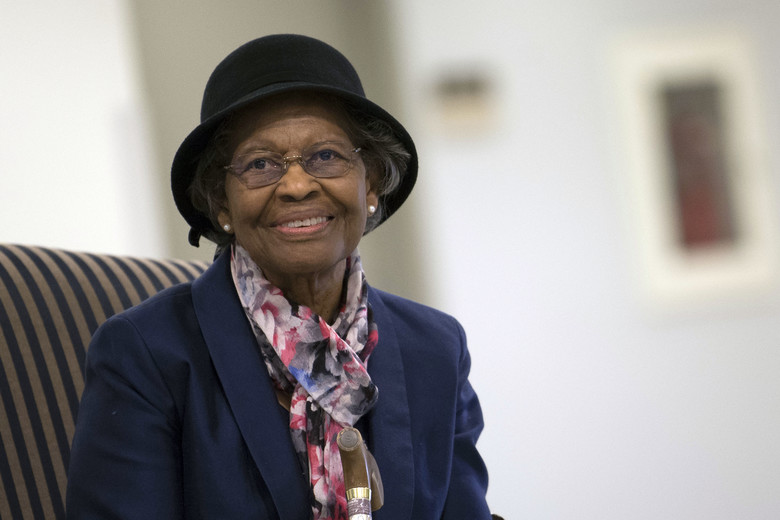Black History Month Profiles: Gladys Mae West

Gladys Mae West, Unfamiliar Hero of Modern GPS Technology
You likely use GPS technology daily whether finding directions on your phone or tracking deliveries. But do you know the brilliant Black woman whose mathematical computations made GPS and satellite technology possible? Meet Gladys Mae West.
Born in 1930 in Dinwiddie County, Virginia, West demonstrated remarkable intelligence from a young age. She was gifted in math and graduated high school as valedictorian with a scholarship to Virginia State College. At a time when educational opportunities for women and African Americans were extremely limited, West pursued higher education, earning a bachelor's degree in mathematics.
In 1956, West began working at the U.S. Naval Proving Ground (now Naval Surface Warfare Center) as one of only four Black employees. She started as a human computer - a team of mostly women mathematicians who performed complex calculations and programming manually for scientists and engineers.
During the 1950s and 60s, the field of satellite geodesy - using satellites to map the Earth’s shape and gravitational field - was brand new and ripe for innovation. West was up for the task. She completed complicated equations using satellite altimeter data to map the Earth’s geography. Crucially, West created an extremely detailed geoid - a mathematical model of the earth. Her contributions provided the foundational data vital for development of the satellite geodesy field.
In the 1960s-1980s, West's groundbreaking work enabled the development of GPS or Global Positioning System technology. GPS relies on satellites to provide real-time tracking and positioning data usable worldwide for air and sea navigation, surveying and mapping, vehicle/fleet tracking, emergency response, and more.
Remarkably, West’s invaluable contributions to GPS went unrecognized for decades. Unaware of computing projects outside their siloed groups, technologists failed to credit West. Plus, as a Black woman in the racially-segregated and male-dominated fields of mathematics and technology, West’s innovations were minimized and obscured.
Finally in the 2010s, West’s seminal GPS work was rediscovered and acknowledged. In 2018, at age 88, West was inducted into the Air Force Space and Missile Pioneers Hall of Fame. She has received honorary doctorates from Virginia and North Carolina universities as well as numerous professional awards.
On her pioneering role, West says “When you’re working every day, you’re not thinking, ‘What impact is this going to have on the world?’ You’re thinking, ‘I’ve got to get this right.’ ”
Now in her 90s, Gladys Mae West resides in Virginia near family as a new generation finally recognizes their predecessors’ enormous contributions. West helped develop foundational modern navigation and surveying technology used globally across industries. Her breakthrough modeling and programming stand as permanent milestones in technological innovation.
So next time you use GPS driving directions or check a delivery ETA, think of Gladys Mae West - brilliant mathematician, programmer, and geodesist without whom society would lack this essential GPS infrastructure woven throughout our daily lives. West's lifetime expanding technological frontiers broke barriers for women, especially Black women, in STEM while propelling satellite mapping and navigation capabilities in entirely new directions. Though long overdue, Gladys West’s rightful place in history as an integral yet overlooked GPS pioneer is finally secured.
STEM Education @SUNY Erie
While West’s intellect and determination were exceptional, her story highlights the need to cultivate talent - especially among groups historically excluded from STEM - through robust mathematics education.
West first honed her skills in high school classrooms allowing her to excel in higher math and computing, ultimately making trailblazing GPS contributions. Her pioneering work merged mathematics, programming, and earth sciences by applying geodetic calculations to satellite tracking.
Today, SUNY Erie students have opportunities to follow in West’s interdisciplinary footsteps - using math to unlock innovations across technology, engineering, business, health care, environmental science, and beyond. A strong math foundation unlocks career paths from data analytics to aerospace engineering to economics.
And mathematics intersects beautifully with the arts and humanities. Mathematical patterns underlie genres like visual art, poetry, rhetoric, linguistics, and music composition. Students can leverage math literacy to find rhythms in literature, model financial trends in history, inform public policies, unveil geometries in dance, and more!
Whether you aspire to program machine learning algorithms, analyze climate change graphs, or discover mathematical theorems - pursue math with curiosity across your academic journey. Perhaps the next great innovation rests not in today’s headlines but in the untapped potential of students still discovering the power, beauty and purpose of mathematics.
